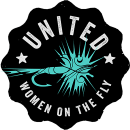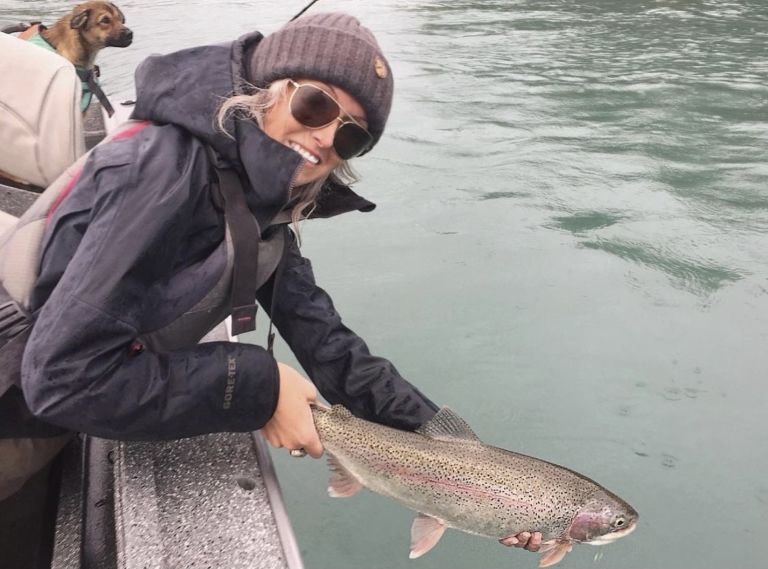Alaska is often seen as a rainbow trout fishing “Mecca” of the world, and it is one of the last strongholds for truly wild, native fish. Genetics, the cold water, and abundant year-round food sources, rainbow trout in Alaska grow slower and live longer than trout in other areas.
Every summer, Alaska sees more than two million tourists visit the state, with fishing being one of the top activities. If you are planning a fishing trip to Alaska or would like to fish here at some point in the future, the options are abundant. With over 3 million lakes and 12,000 rivers, there are endless places to catch wild, beautiful rainbows. And while I can only make recommendations on those places, let’s take a look at how to catch them once you get here.
Like most fly fishing destinations, the key to catching rainbows in Alaska is knowing what they are eating and then presenting it in an enticing way. In Alaska, “matching the hatch” means knowing what is going on within the system you’re fishing. This includes both entomology and the salmon life cycle.
Rainbow trout in the wild will feed on insects, sculpins, leeches, freshwater eels or shrimp, mice, and salmon eggs, alevin, fry, smelt, and later, salmon flesh as spawning salmon die and begin to decompose. With biomass constantly available, rainbows don’t have to work very hard to eat and aren’t as picky as trout in other regions. Imitating these food sources requires different techniques and rigging for your rod. Fortunately, you may already be familiar with some of these methods from fishing for trout in your own area.
*Please note that this is a general guidance and not an end-all-be-all summary. One of my favorite things to do is experiment to see what’s working. I’ll almost always try a mouse pattern on smaller streams and rivers just to see if it works (even if there’s little chance that it will) because it’s one of my favorite ways to catch trout.
Remember, fly fishing is supposed to be fun!
Like most fly fishing destinations, the key to catching rainbows in Alaska is knowing what they are eating and then presenting it in an enticing way.
Dry Fly FIshing
- Ideal Rod
- Small Water/Lighter Currents – 5 wt – 8’6”-9’
- Large Water/Heavier Currents – 5 or 6 wt – 8’6”-9’ 5
- Fly Line and Leader Set Up – Weight forward floating line to 9’ tapered leader. You can go thicker diameter monofilament leaders to match bigger dry flies.
- Flies – Stimulators, green drakes, parachute adams, elk hair caddis.
- Size #8 to #16.
- Method – Arguably the most well-known fly fishing technique from around the world, dry fly fishing can be as easy as using larger generics, as opposed to constantly worrying about matching the hatch.
- This method is ideal for smaller streams or the eddies or riffles of larger rivers during warm weather, and it can be a great way to catch trout until the salmon begin to spawn.
- Seeing trout hit actual bugs on the surface is a great (and somewhat obvious) indicator that putting on a dry fly will work.
** Make sure you check the regulations where you intend to fish. In Alaska, several bodies of water are single-hook only, so a setup like the often-used “hopper dropper” with two flies would be illegal. **
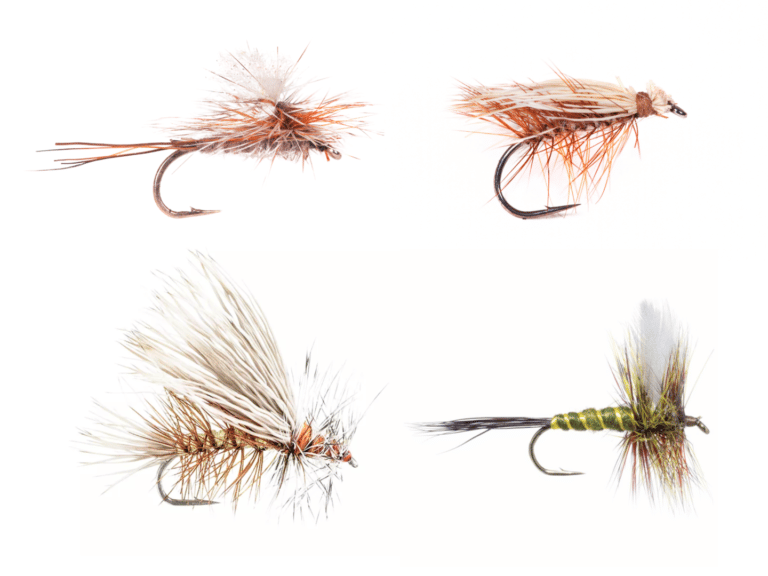
Mousing
- Ideal Rod – 5 or 6 wt – 9′
- Fly Line and Leader Set Up – Regular floating line to heavier tapered leader (to turn over the mouse pattern)
- Flies – Any mouse pattern (Moorish Mouse, Mouse Rat)
- Method – You may have heard the term “mousing”, as fishing with mice patterns is becoming extremely popular.
- Trout in Alaska are well-known for being carnivorous, eating mice, voles, and shrews. Think of fishing a mouse pattern as you would a giant, foam dry fly.
- Skating, swinging or “skittering” a mouse fly across the surface will elicit a violent take from aggressive Rainbow Trout. This has to be our favorite way to fish for trout up here!
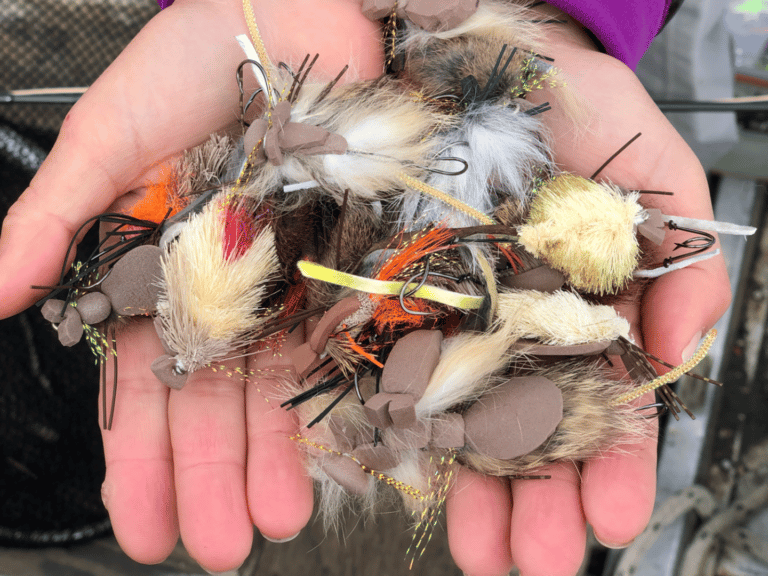
Bead fishing
- Ideal Rod
- Small Water/Lighter Currents – 4-6 wt – 10′
- Large Water/Heavier Currents – 6 to 8 wt – 10′
- Line Setup – Fly lines such as Rio Extreme Indicator or Scientific Anglers Anadro Indicator help turn over the weight (split shot) on your line and indicator.
- Tapered leaders will work, but custom (level no taper) fluorocarbon leaders tend to get down faster.
- Flies – 6mm, 8mm, 10mm and 12mm beads in a variety of colors/hues to match the most common salmon egg colors.
- Method – Love them or hate them, one cannot deny the effectiveness of the bead, especially once the salmon begin to spawn. Beads will range from 6mm-12mm and in a variety of colors, small plastic beads are meant to imitate the range of salmon eggs, from fresh to dead, and also by species of salmon.
- To utilize this method, run your leader to a tippet ring/swivel/blood knot, and from this connection add another 18” of tippet.
- Fix 1-3 (to start and adjust as necessary) split shot at this knot to avoid having it slide closer to your hook.
- Put your bead on this 18” section and keep it in place with a toothpick or Trout Pegs, about two inches from the end of the line.
- You will then add your hook.
** Make sure you check your regulations—in Alaska, beads must be free-sliding or cannot be fixed more than two inches from the hook. **

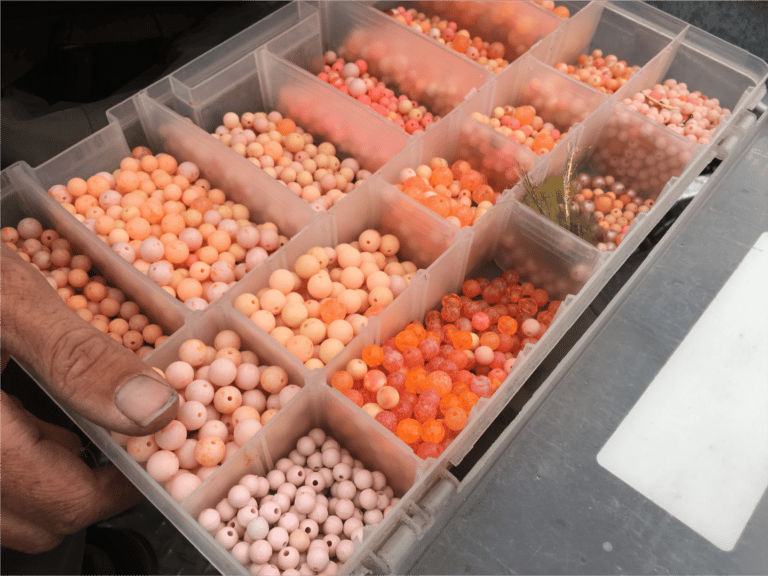
Dead Drifting Flesh Flies
- Ideal Rod
- Small Water/Lighter Currents – 4-6 wt – 9′
- Large Water/Heavier Currents – 6 to 8 wt – 9′
- Line Setup – Weight forward floating line with a short (4-6′) piece of non-tapered mono tippet.
- The level (non tapered) leader will get down more quickly.
- Flies – Micro flesh, articulated flesh and other flesh patterns from white to cream to tan to ginger to pinks, oranges and reds work well at different times of the year.
- Method – Similar to bead fishing, after salmon have spawned and died, their flesh begins to fall off their decaying bodies and enters the water. Hungry Rainbow Trout will gorge on salmon flesh throughout the months following the salmon spawn.
Watch the June UWOTF Virtual Meeting Presentation on Summer Trout Fishing Tips on Approaching Trout with Stealth, Nymph Fishing with a Strike Indicator and Alaska Fishing Techniques. Co-Hosts – Anh Thai, Jenn Hsia and Jackie Bowman.
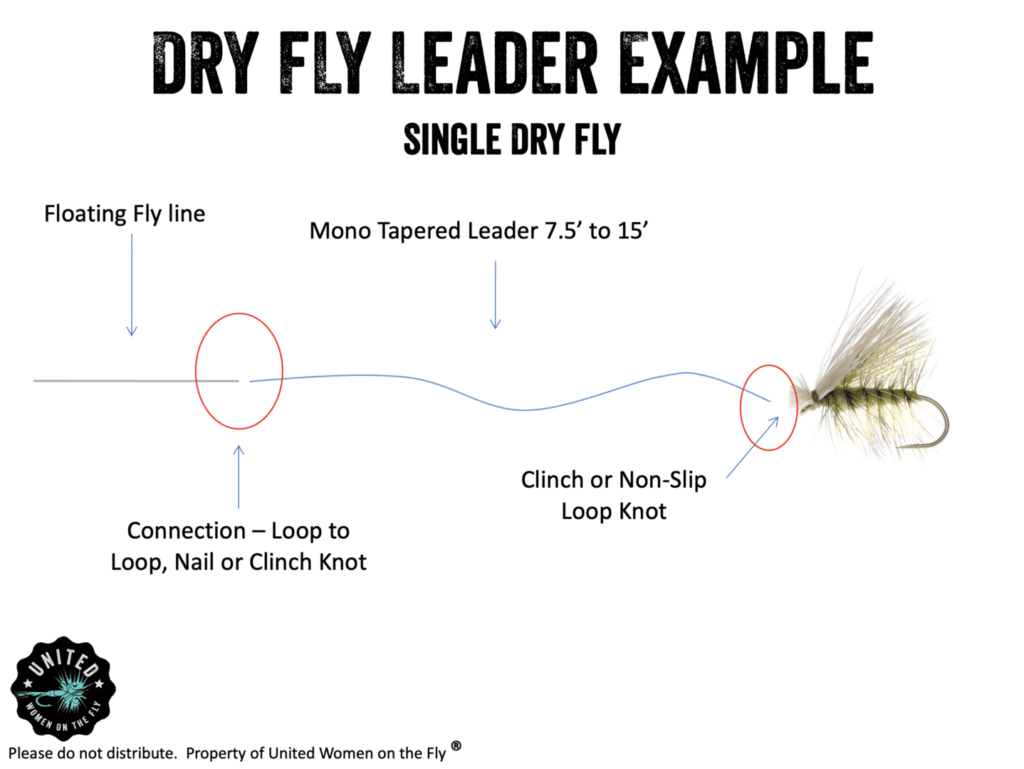
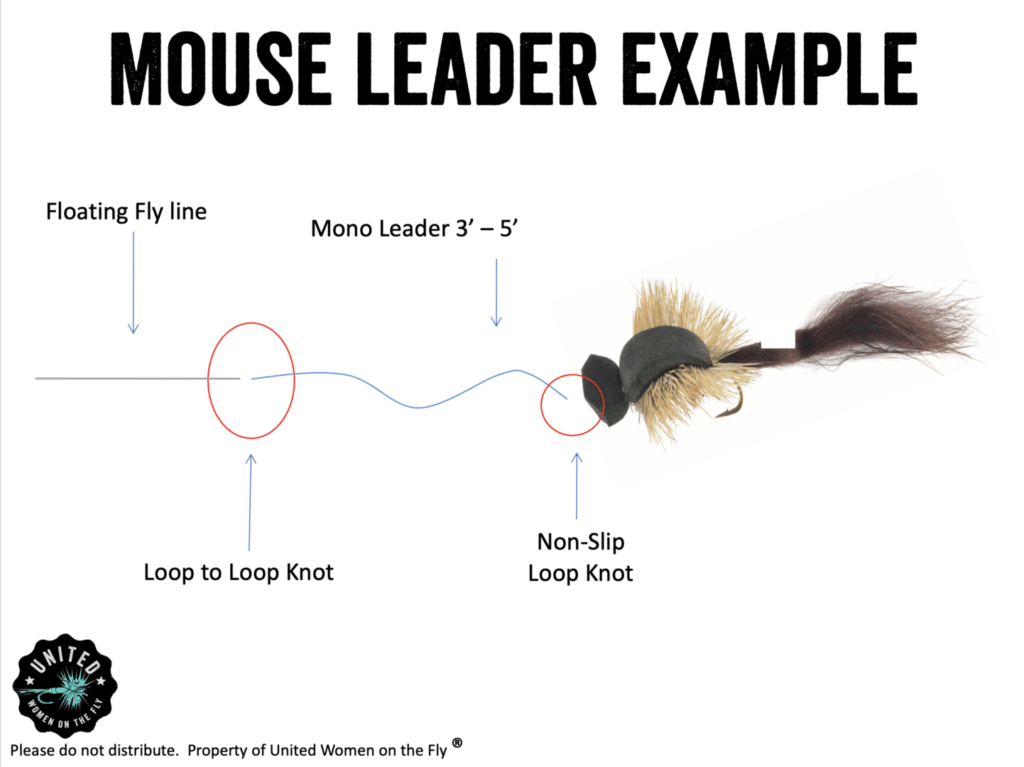
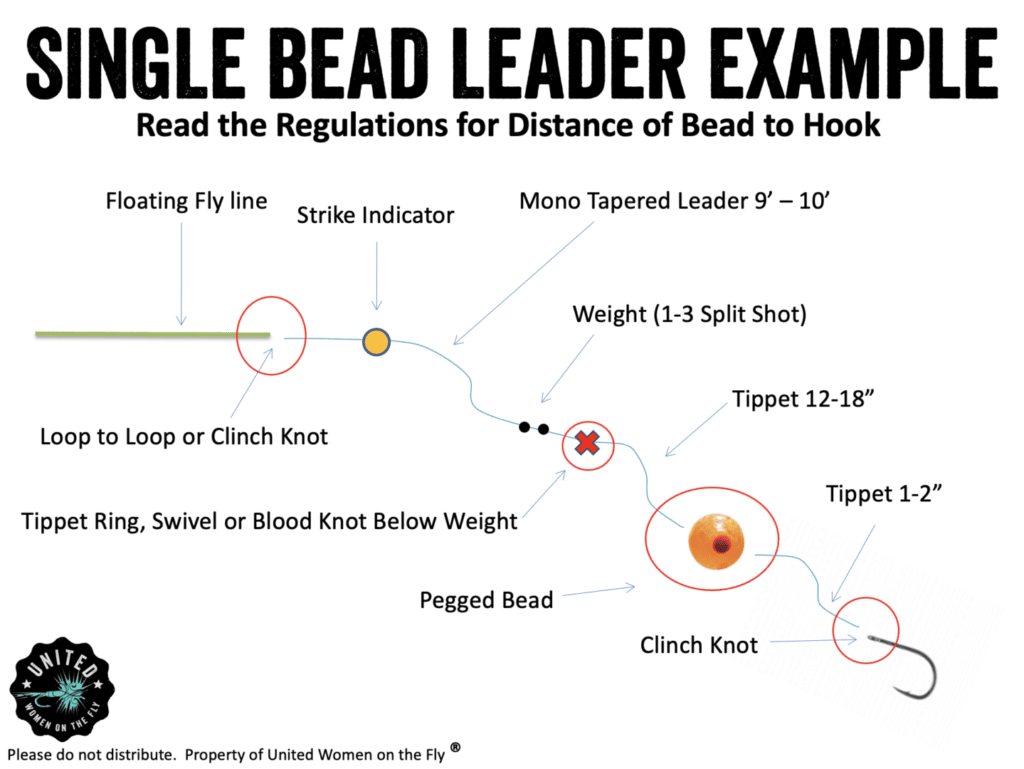
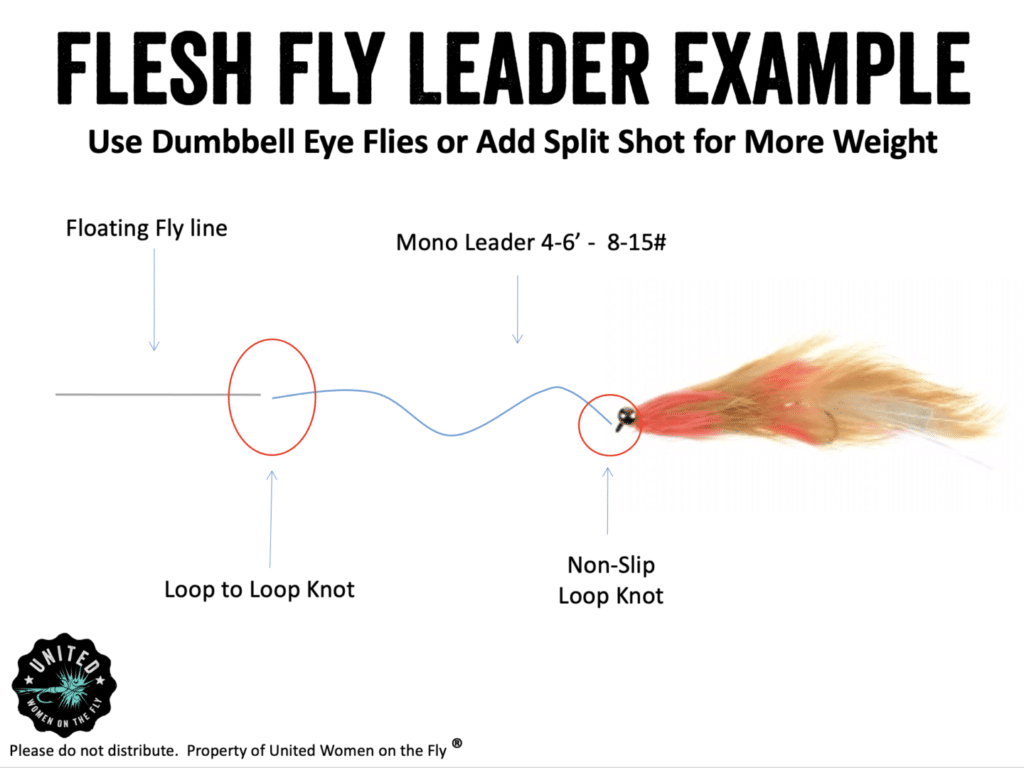
Connect with Jackie Bowman
My name is Jackie, and I’m the co-owner of Cooper Landing Fishing Guide, LLC on the Kenai Peninsula in Alaska. I grew up in Wisconsin but fell in love with Alaska and moved to King Salmon (in Bristol Bay) immediately following a two-week vacation in 2009. I worked in aviation management until 2016, when I met my (now) business partner Dave, a guide on the Kenai River. We both had an incredible passion for fly fishing and Alaska’s fisheries and decided to start our own guide service. In 2020, our operation expanding to include another guide, Mike. We are now in our fifth season and guide the Kenai and Kasilof Rivers for rainbow trout, dolly varden, and all species of Pacific salmon. We love sharing Alaska and our rivers with our guests, and we hope they leave with a greater appreciation for wild spaces and wild fish.
When I’m not fishing, I’m usually fishing (😂), foraging, painting, traveling, or hiking. I have two boat dogs named Maxine and Gigi, who are my world.
I started Alaska Women on the Fly a few months ago with my friend Shayna, in hopes of connecting and highlighting women with a shared interest in fly fishing. It has been so cool to watch the page grow and meet a bunch of new people, and I’m excited to plan some meet-ups in the near future!
